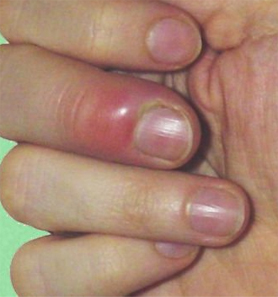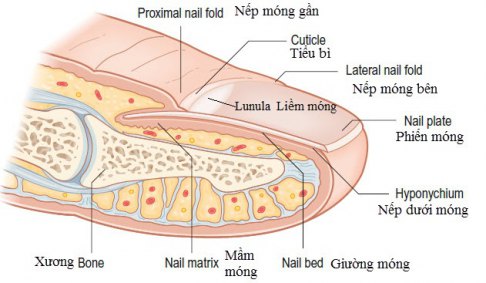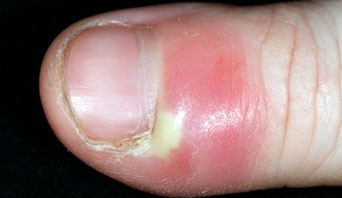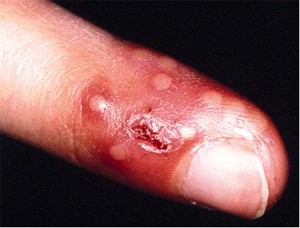
Paronychia is inflammation of the skin around a finger or toenail. It can be acute (< 6 weeks) or chronic (persisting > 6 weeks). Paronychia is also called whitlow.
Acute paronychia can affect anyone. However, it is more likely to follow a break in the skin, especially between the proximal nail fold/cuticle and the nail plate.

Causes
Acute paronychia is usually due to bacterial infection with Staphylococcus aureus (which may be multiresistant), Streptococcus pyogenes, Pseudomonas, or other bacterial pathogens. It can also be due to the cold sore virus, Herpes simplex, and the yeast, Candida albicans.
Clinical features
Acute paronychia develops rapidly over a few hours, and usually affects a single nail fold. Symptoms are pain, redness and swelling.

Sometimes yellow pus appears under the cuticle and can evolve to abscess. The nail plate may lift up (onycholysis).
Acute paronychia due to S. pyogenes may be accompanied by fever, lymphangitis and tender lymphadenopathy.
If herpes simplex is the cause, multiple tender vesicles may be observed.

Herpetic whitlow